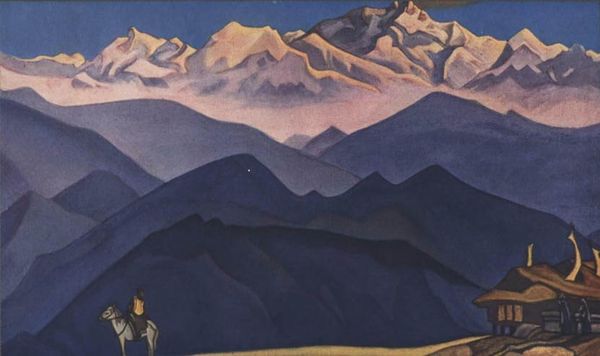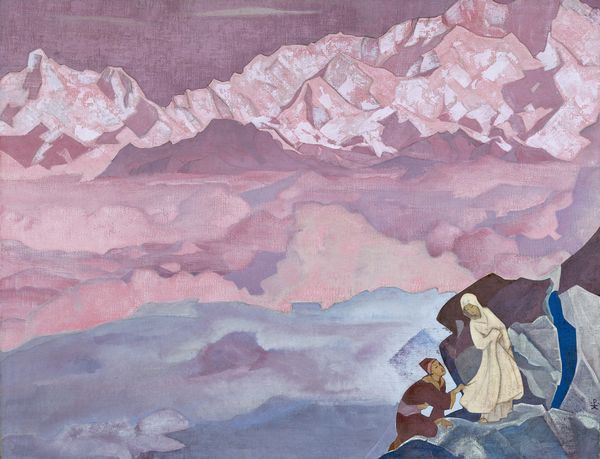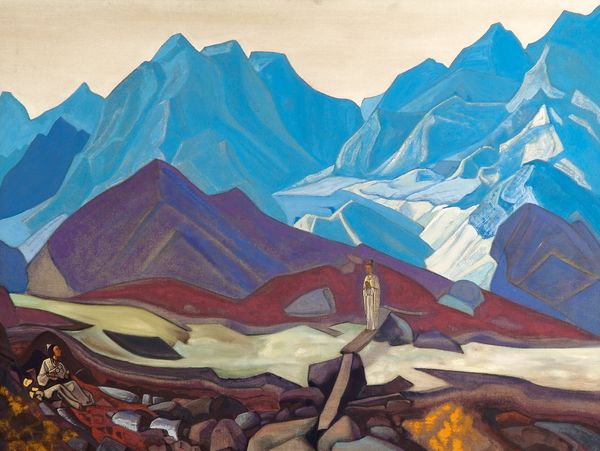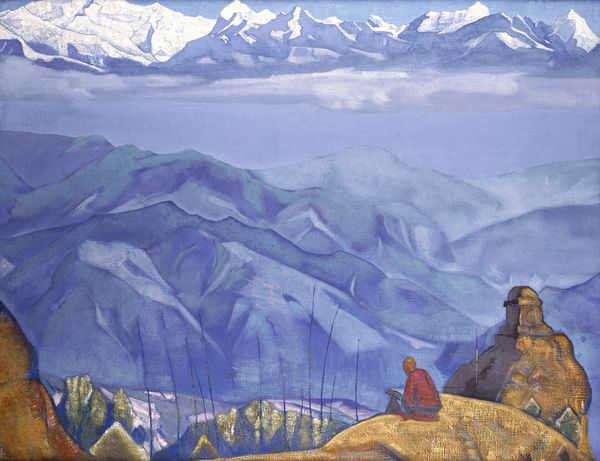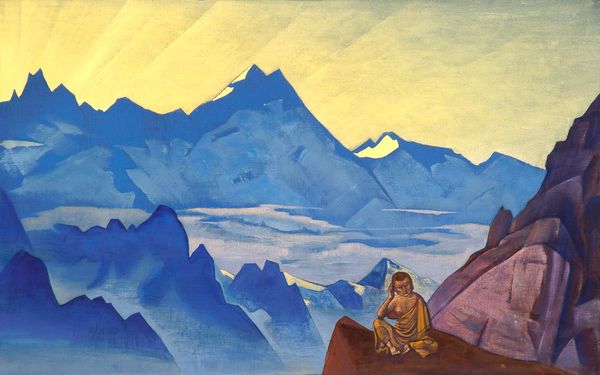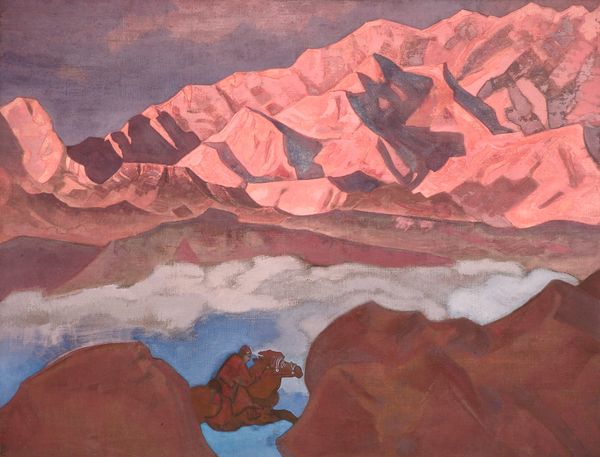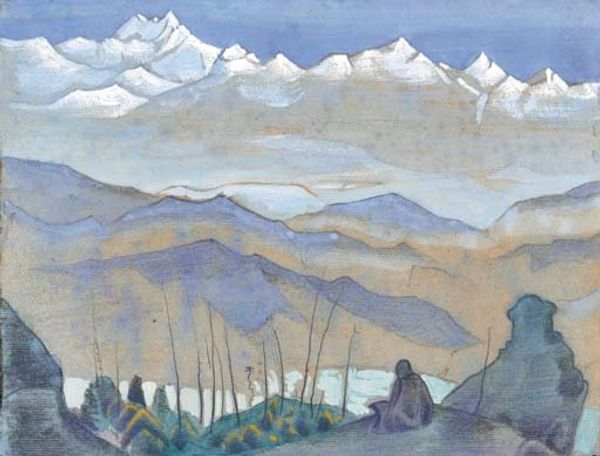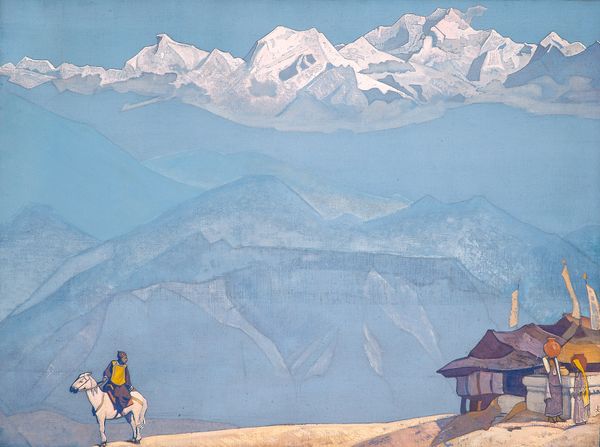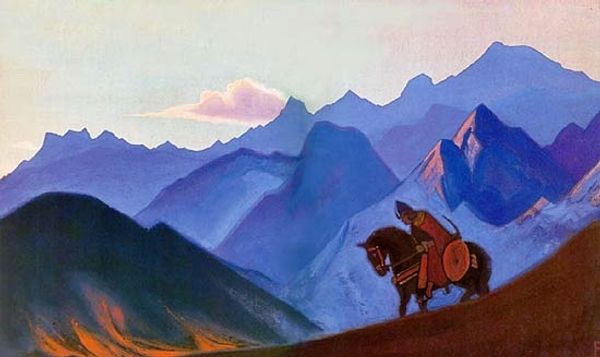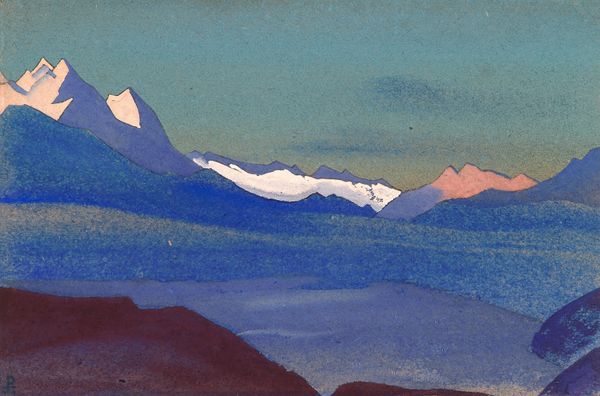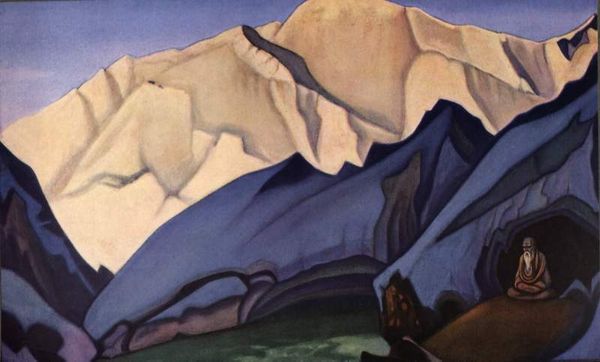
Dimensions: 89.5 x 117 cm
Copyright: Public domain
Curator: I’m immediately drawn to the quiet solemnity here. There’s a meditative stillness. Editor: That’s quite astute. What we’re looking at is “Pearl of Searching,” painted by Nicholas Roerich in 1924. The Roerich Museum in New York City houses it, if you ever want to see the painting in person. Roerich was deeply interested in symbolism and Eastern philosophy, wasn’t he? Curator: He absolutely was. And that interest fundamentally shaped his art, leading to this blend of symbolism and landscape, very much inspired by the Himalayas, where he spent much of his life searching for Shambhala, among other places. Notice how the human figures are dwarfed by the immensity of the mountainscape, almost absorbed into it. Editor: Yes, those tiny figures, clad in simple garments, sit on that precipice as if at the edge of existence. I'm curious about the gesture between them. Are they sharing an object? Bestowing wisdom? What meaning do you find there? Curator: Ah, the "Pearl" of the title, perhaps? What it might be seems purposefully obscured. It could represent enlightenment, knowledge, even faith itself. These are figures rooted in the theosophical society that was increasingly popular. They invite us to contemplate our place within the grand scheme of the cosmos, suggesting spiritual seeking. It is less history painting and more history of an ideal. Editor: And beyond the symbolic, there’s something deeply captivating about Roerich's technique itself. The palette is muted, almost pastel, rendering the scene dreamlike, as if it's drawn from the well of cultural memory, invoking shared ideals of the sublime, like many works in the Romantic tradition. Curator: It feels as though Roerich used paint in a deliberate political attempt to idealize the east for western consumption. In reality the landscapes themselves, which he documented with scientific rigor, exist outside that orientalist framing. So what Roerich achieved here, perhaps unintentionally, was to underscore the ever shifting meanings we all can place on a single icon, regardless of political motivations. Editor: An act of cultural translation—filtered and perhaps romanticized, certainly idealized, and now further interpreted by us, decades later. Curator: Exactly. It leaves you wondering not just what they are searching for, but what search it kicks off within us too.
Comments
No comments
Be the first to comment and join the conversation on the ultimate creative platform.
